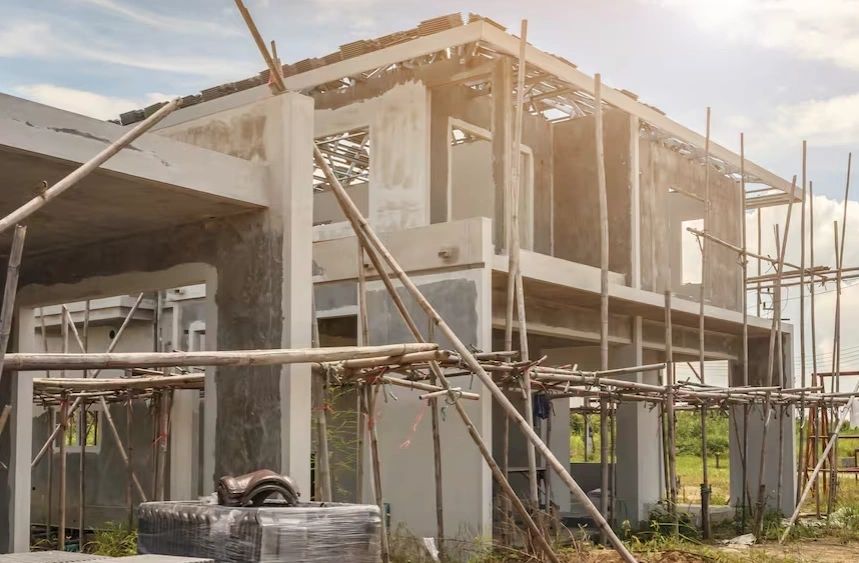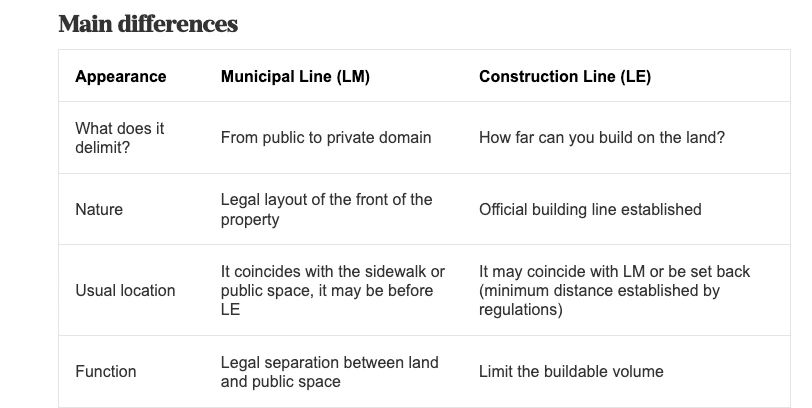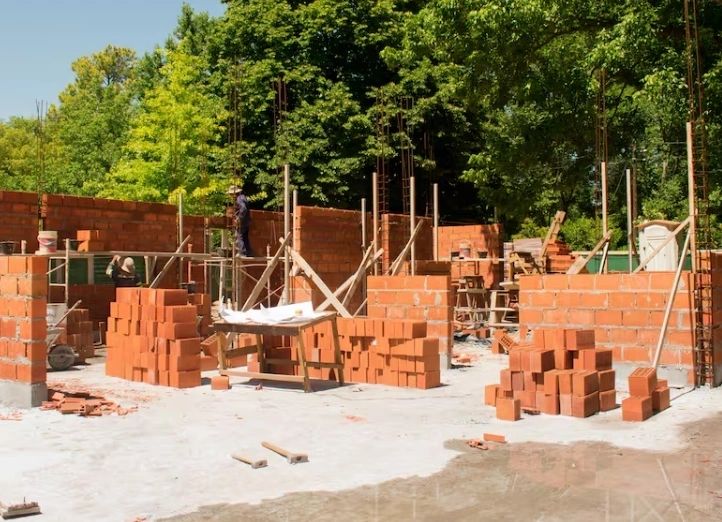BuySellBA
Administrator
What is the difference between a municipal line and a construction line? - La Nacion Propiedades

Source:

 www.lanacion.com.ar
www.lanacion.com.ar
July 25, 2025
When planning a project, it is essential to understand what these two concepts mean, which regulate how far one can advance in the field.

Before starting a construction, it is important to know the limits up to which you can build. Shutterstock
The municipal line and the building line (also called the construction line ) are distinct concepts related to construction and urban space. In the context of urban development and building regulations , these two concepts are fundamental to understanding the extent to which a piece of land can be built .
In this sense, the municipal boundary is considered the official boundary separating public space (whether existing or planned) from private property . It determines the physical boundary of the property facing the street.
The building line , on the other hand , is an imaginary line set by the municipality that indicates the extent to which construction is permitted on a piece of land. It may coincide with the municipal line or be set back from it if there are mandatory building setbacks. In other words, it marks the minimum alignment to be respected for construction and is usually established for new construction or renovations using approved plans.

Thus, building a 110 m² house using the most affordable materials, while still maintaining quality, would cost around US$170,170; while building one with the highest quality available would cost around US$330,000 .
When compared to the average square meter price of a used home in Buenos Aires (which is around US$1,795, according to Zonaprop), a 110 square meter home would cost around US$197,450 . It's worth clarifying that these figures are averages, taking the minimum and maximum values for Buenos Aires and generating a mean.

Building a 110 m² house, with the most economical materials, without losing quality, would cost around US$170,170. Batrob Construction Company
However, with the dollar remaining virtually unchanged recently— despite a rise in recent days compared to previous months, it remains within the exchange rate band established by the government— construction costs have reached unexpected levels.
However, experts point out that price increases are slowing. "We're seeing that, as far as materials are concerned, prices are falling, although not at the pace we would like. The opening of imports has helped a lot in this regard, as many people have started buying abroad. Meanwhile, labor is increasing, which offsets the decline in materials prices," explains Federico Azzollini, managing partner of Icon.
Damián Tabakman, president of the Chamber of Urban Developers, agrees with Azzollini that prices are no longer rising at the same pace as before , and explains that "values are plateauing, partly because sales are not as high, and partly because imports have lowered costs."
www.buysellba.com
Source:

¿Cuál es la diferencia entre línea municipal y línea de construcción?
Al momento de proyectar una obra, es fundamental entender qué significan estos dos conceptos que regulan hasta dónde se puede avanzar en el terreno
July 25, 2025
When planning a project, it is essential to understand what these two concepts mean, which regulate how far one can advance in the field.

Before starting a construction, it is important to know the limits up to which you can build. Shutterstock
The municipal line and the building line (also called the construction line ) are distinct concepts related to construction and urban space. In the context of urban development and building regulations , these two concepts are fundamental to understanding the extent to which a piece of land can be built .
In this sense, the municipal boundary is considered the official boundary separating public space (whether existing or planned) from private property . It determines the physical boundary of the property facing the street.
The building line , on the other hand , is an imaginary line set by the municipality that indicates the extent to which construction is permitted on a piece of land. It may coincide with the municipal line or be set back from it if there are mandatory building setbacks. In other words, it marks the minimum alignment to be respected for construction and is usually established for new construction or renovations using approved plans.

Why is this distinction important?
These lines serve to ensure:- Urban uniformity : coherent alignment of facades on the block.
- Safety and open public space : avoid constructions that invade public areas.
How much does it cost to build a 110 m2 house?
According to experts consulted by LA NACION, construction of one square meter starts at US$1,400 + VAT (US$1,547). However, it can rise to US$3,000 if more expensive materials are chosen for the entire project and the goal is to build a premium home.Thus, building a 110 m² house using the most affordable materials, while still maintaining quality, would cost around US$170,170; while building one with the highest quality available would cost around US$330,000 .
When compared to the average square meter price of a used home in Buenos Aires (which is around US$1,795, according to Zonaprop), a 110 square meter home would cost around US$197,450 . It's worth clarifying that these figures are averages, taking the minimum and maximum values for Buenos Aires and generating a mean.

Building a 110 m² house, with the most economical materials, without losing quality, would cost around US$170,170. Batrob Construction Company
Why is the cost of construction increasing?
One of the main causes behind this phenomenon is the stability of the dollar, with the US dollar's value falling in recent months , which means that increasingly more dollars are needed to build the same subways. For more than two years, costs measured in US dollars kept pace with fluctuating inflation in pesos and constant devaluations.However, with the dollar remaining virtually unchanged recently— despite a rise in recent days compared to previous months, it remains within the exchange rate band established by the government— construction costs have reached unexpected levels.
However, experts point out that price increases are slowing. "We're seeing that, as far as materials are concerned, prices are falling, although not at the pace we would like. The opening of imports has helped a lot in this regard, as many people have started buying abroad. Meanwhile, labor is increasing, which offsets the decline in materials prices," explains Federico Azzollini, managing partner of Icon.
Damián Tabakman, president of the Chamber of Urban Developers, agrees with Azzollini that prices are no longer rising at the same pace as before , and explains that "values are plateauing, partly because sales are not as high, and partly because imports have lowered costs."
www.buysellba.com

